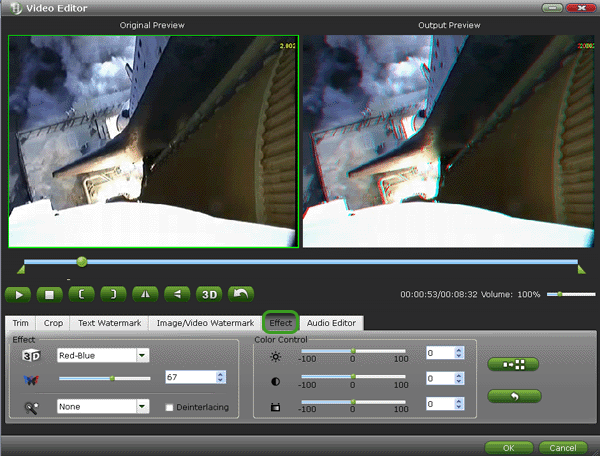

- 2D IMAGE TO 3D IMAGE CONVERTER HOW TO
- 2D IMAGE TO 3D IMAGE CONVERTER SOFTWARE
- 2D IMAGE TO 3D IMAGE CONVERTER FREE
The different layer depths result in a parallax effect when the Camera is moved which is what happens in real life.

As before, increase the scale to bring the background to the correct size. Now for the background layer, doing the same thing, increase how far back it is in Z space. Because the Midground layer has been pushed back in space, it no longer fills the screen anymore, to rectify this, increase the scale until it looks like it did before. Under the transform, set the Position to something negative like -500 the exact number depends on the picture you use and how far it should appear from the camera. Select the midground layer and go into the controls panel. The Foreground layer will remain where it is. Now that we have isolated the foreground, midground, and background, select the composite shot layers and change them from 2D to 3D – this will automatically create a new Camera. Lastly, duplicate the Midground layer, rename the duplicate Background and delete all of the masks present in the background layer. As before, begin to mask around the elements that are present in the appropriate depth from the camera – in this instance, these midground elements include the waterline, the near distant mountains, and the tree line. Temporarily hide the Forground layer while working in the Midground layer to be able to better see what you’re doing. Then, in the Midground layer delete all of the masks. With the foreground isolated, duplicate the layer and rename the duplicate Midground. In the Mask controls, Keep the Feather Strength of the foreground object masks low to preserve the sharp edges however, for the terrain, increase the Feather Strength so it fades in more drastically. We used a separate mask for the terrain of the foreground so we can vary the feathering. Next, create a Rectangular mask for the bottom of the frame, and position it accordingly. The mask for this must be precise as rough edges will make it obvious that the scene is a cut-out. Go into the freehand mask tool and mask around any of the shapes that are in the foreground to isolate it from the background – in this instance, we masked around the house. To keep track of the resulting images, rename the current image layer to Foreground.
2D IMAGE TO 3D IMAGE CONVERTER SOFTWARE
You will probably need to use another software to make an asymmetrical model with a lot of details, however, if it is going to be an asymmetrical model with a lot of details.Begin by creating a new Composite Shot and moving the 2D image onto the timeline. Well, if you can reproduce symmetrically your 2D image, then you'll be able to get a 3D model that appears surprisingly like your 2D image. You may make a straightforward digital model online using just one image that resembles the kind of outcome you would get from a scan or photogrammetry.
2D IMAGE TO 3D IMAGE CONVERTER FREE
This free online resource changes the game for this genre. Smoothie 3D tool: Smoothie 3D may be the simplest way to turn your 2D images into 3D models.

The tool can be found in most CAD software programs. With this tool, you will be able to add volume to your 2D model by using a specific algorithm that calculates the volume. In order to create new geometry out of selected components, you can use the extrude tool in order to add a third axis to your geometry. List of tools for your helpĮxtruding software:The picture you are going to use in your 3D model will be a 2D file, which means that you will only be able to manipulate it along two axes in order to use it.
2D IMAGE TO 3D IMAGE CONVERTER HOW TO
Don't be alarmed you can seek some assistance from a designer to get a 3D printable file if you really have no idea how to utilize 3D modeling software. You can complete the entire procedure on your own, from the filming to the final decision regarding the 3D printing materials. We will provide you with some useful tips based on our experience to help you construct the most effective shooting. There isn't a single answer that works for all situations. Keep in mind that the source footage plays a major role in the effectiveness of any of these options. This article provides an overview of various methods for transforming 2D photos into 3D models. You may create a 3D model from images using a number of efficient methods. Your best designs will come to life thanks to 3D printing, and you can now create interactive 3D models from 2D photographs, yes you have read that right! You can 3D print something if you have a picture of it converted into a 3D model.


 0 kommentar(er)
0 kommentar(er)
